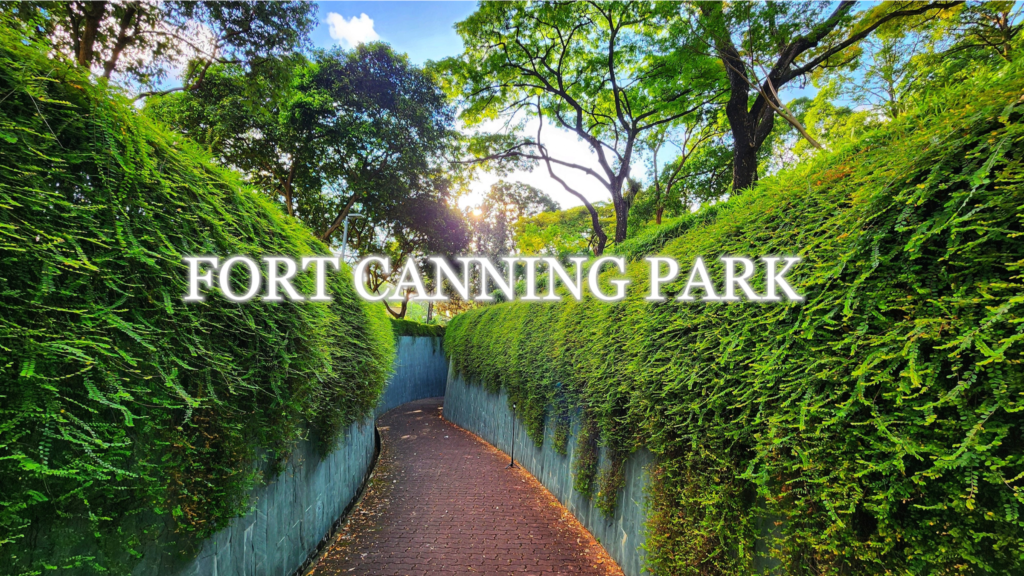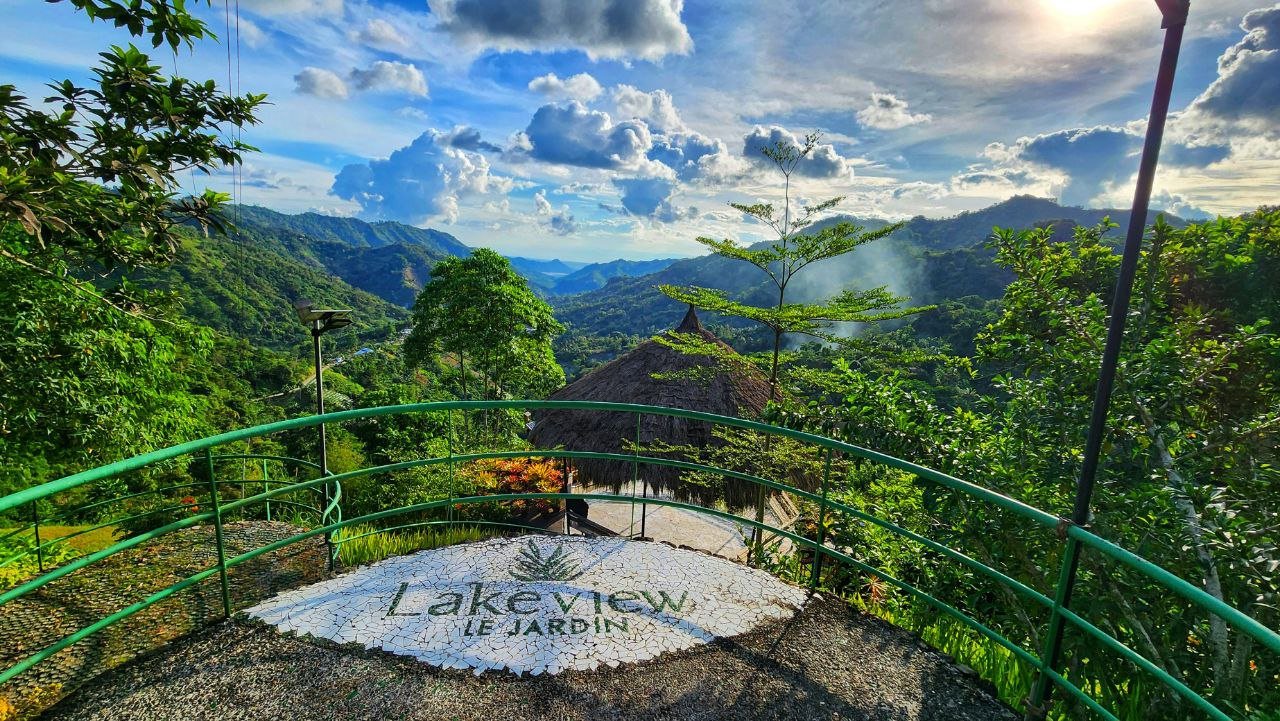Join me [Edward Adventure Blogs] on an adventure to Fort Canning Park, a hidden gem nestled in the heart of Singapore. This lush oasis is a treasure trove of history, culture, and breathtaking views. Explore the park’s winding paths, discover hidden corners, and immerse yourself in Singapore’s captivating past.
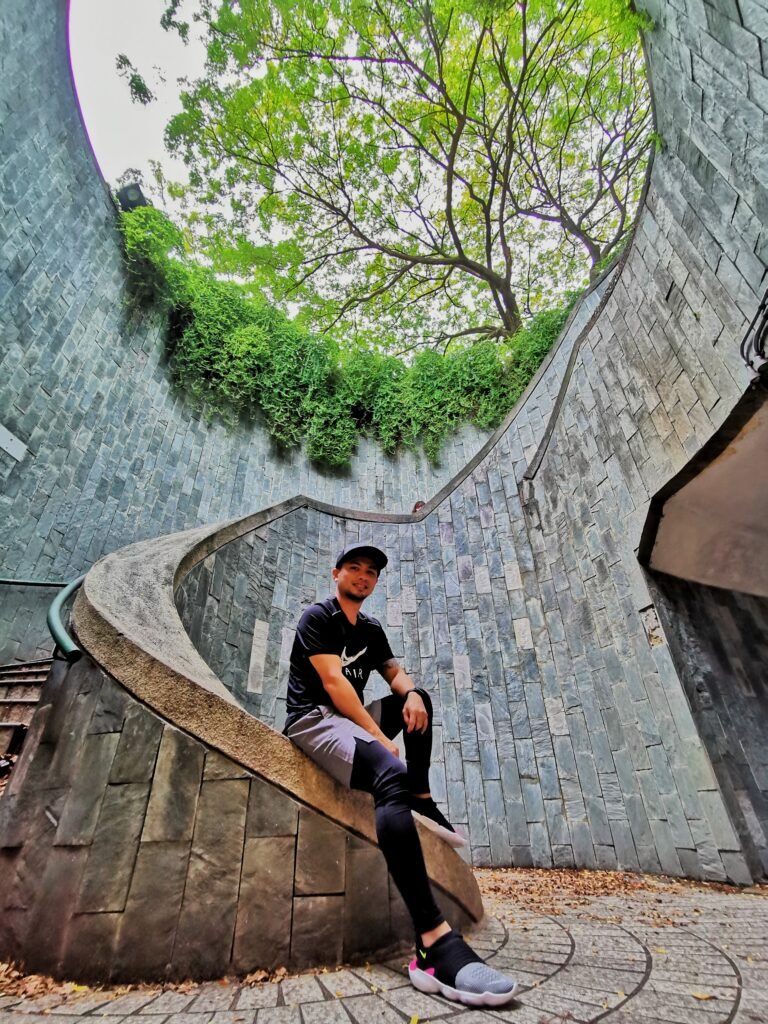
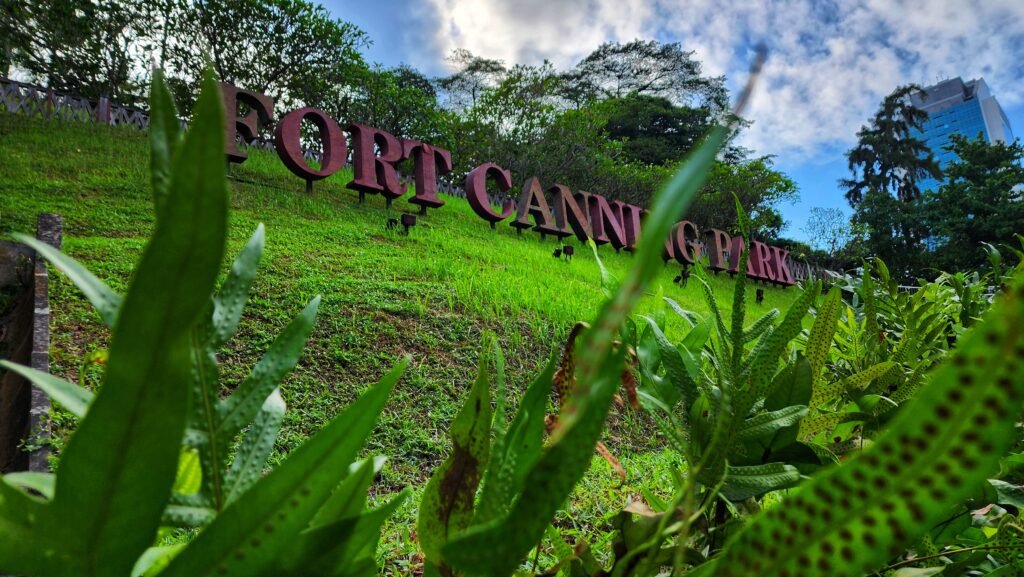
Fort Canning Park: A Tapestry of Time
Fort Canning Park is more than just a park; it’s a living testament to Singapore’s rich history. Once known as Bukit Larangan (Forbidden Hill), this hallowed ground has witnessed the rise and fall of empires.
Legends whisper of a grand palace that once stood here, a seat of power for ancient kings. Its ruins were still visible when Sir Stamford Raffles arrived in 1819. The hill later became the residence of colonial governors before being transformed into a fort in the 1860s, hence its current name.
World War II cast a long shadow over Fort Canning. The infamous Battlebox, an underground bunker, was the site of Singapore’s surrender to the Japanese. This dark chapter of history is a stark reminder of the island’s resilience.
Today, Fort Canning Park is a serene oasis amidst the bustling city, inviting visitors to explore its historical trails, soak in breathtaking views, and connect with Singapore’s past.
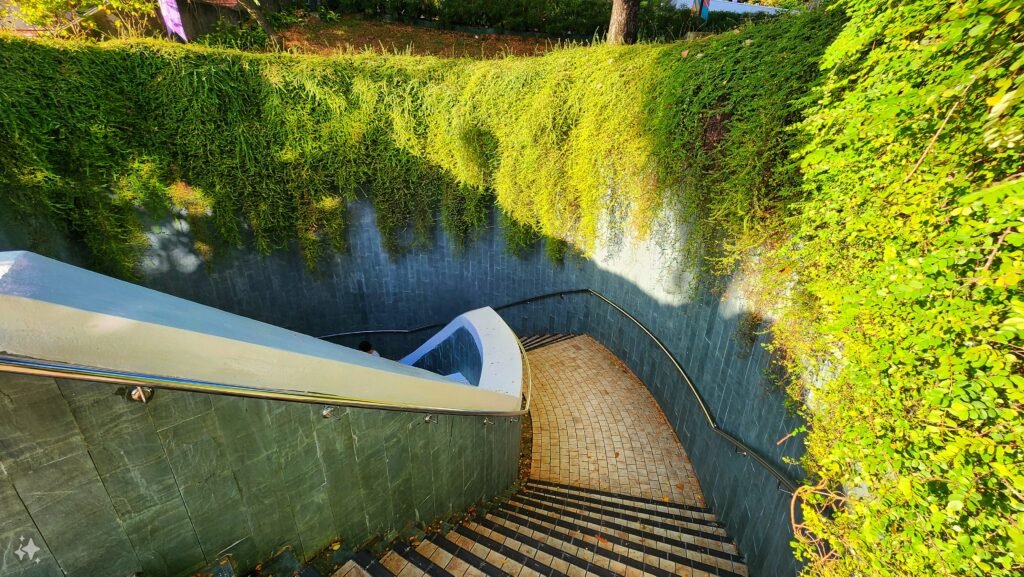

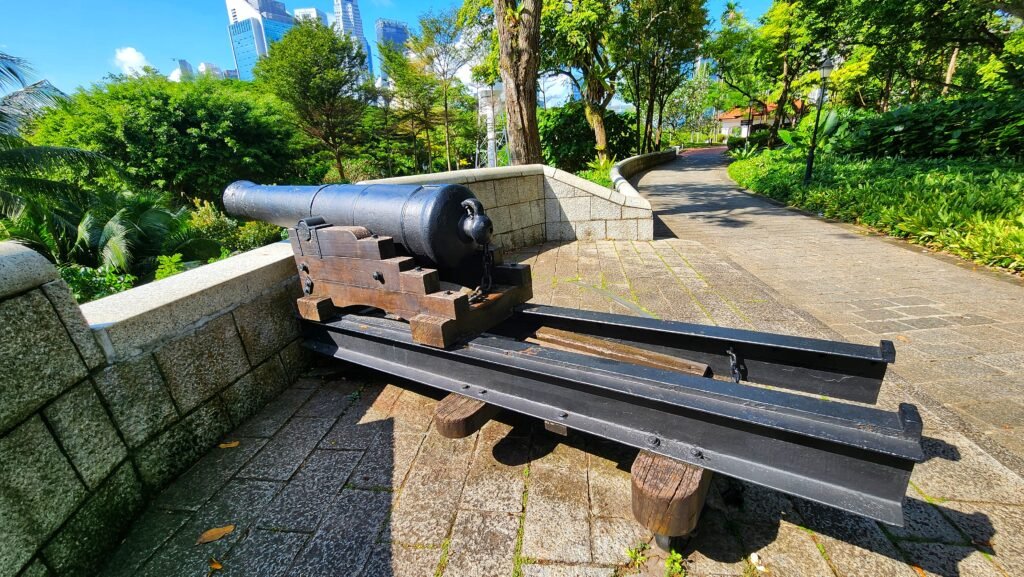

How to Get to Fort Canning Park
Fort Canning Park is conveniently located in the heart of Singapore and is easily accessible by public transportation.
By MRT:
- Fort Canning Station: The most direct option. Take the Downtown Line and alight at Fort Canning Station. Exit B will lead you directly to the park.
- Clarke Quay Station: Exit E and walk along Coleman Bridge. Cross the pedestrian overhead bridge on River Valley Road to enter the park.
- Dhoby Ghaut Station: Exit B, cross Penang Road, and look for the tunnel leading to Fort Canning Park.
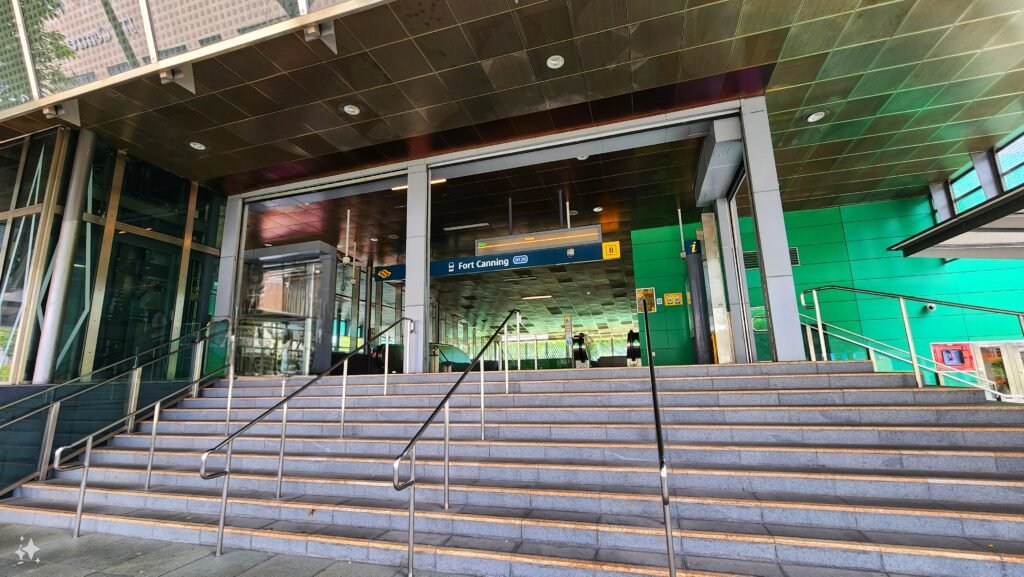
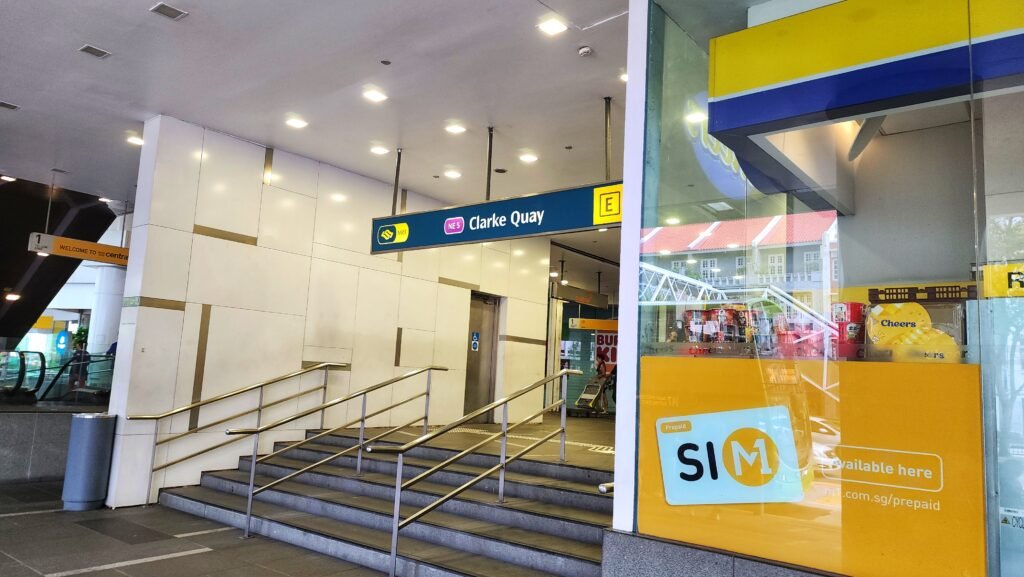
Bus:
- Several bus services stop near Fort Canning Park. Check with the public transportation app or website for the most up-to-date information.
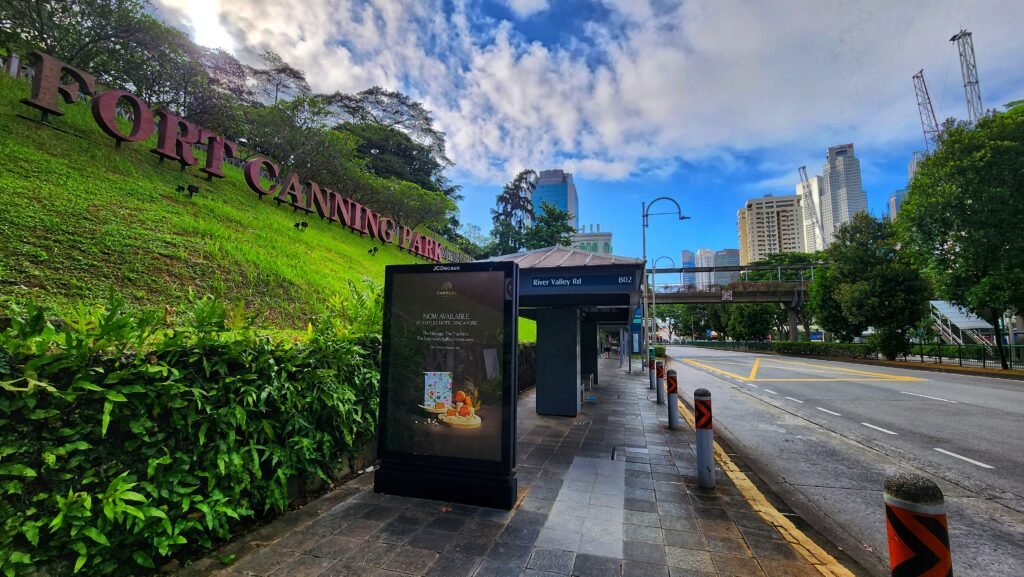
Car:
- There are limited parking spaces within the park. Consider using public transportation for a hassle-free experience. If driving, use GPS navigation to Fort Canning Road.
Tip: Check for traffic conditions, especially during peak hours, if you’re planning to drive.
Fort Canning Park’s Historical Landmarks
Fort Canning Park is a treasure trove of historical landmarks that offer a glimpse into Singapore’s rich past. Here are some of the most notable ones:
The Fort Gate: A Vestige of Singapore’s Colonial Defenses
The Fort Gate is a prominent remnant of Fort Canning’s military past. This imposing structure served as the main entrance to the fort, built in the 1860s to protect Singapore from potential seaborne attacks.
Key Features of the Fort Gate:
- Strategic location: Facing the sea, the Fort Gate was designed to repel invaders.
- Defensive architecture: Its sturdy construction and imposing appearance reflect the era’s military engineering.
- Historical significance: As the main entrance to the fort, it symbolizes Singapore’s colonial history.
Beyond Defense:
While primarily a defensive structure, the Fort Gate also served as a refuge for the European population during times of social unrest, such as the Indian Mutiny of 1857.
Today, the Fort Gate stands as a silent sentinel, guarding the park’s rich history. It’s a popular spot for visitors to take photos and appreciate the park’s heritage.
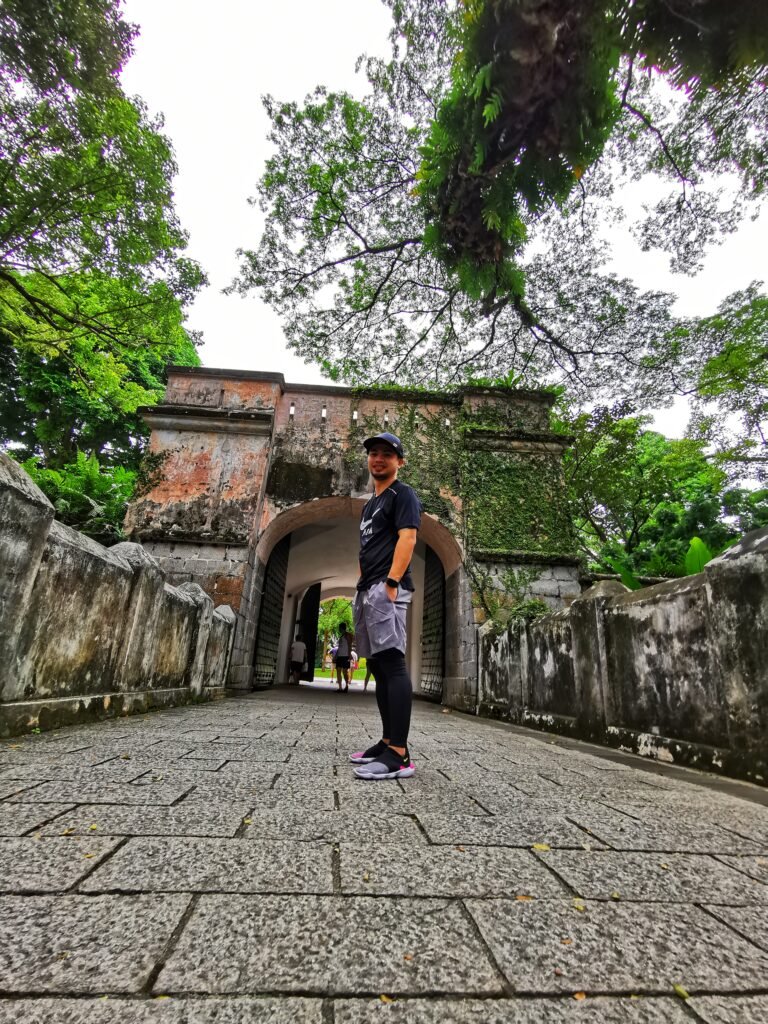
The Battlebox: Singapore’s Underground War Room
The Battlebox is a haunting reminder of Singapore’s darkest hour. This underground bunker, carved into the heart of Fort Canning Hill, served as the nerve center of the British Malayan Command during the final, desperate days of the Malayan Campaign and the Battle of Singapore.
A Bunker Under Siege:
- Built for defense: Constructed in the 1930s as a bomb-proof command center, the Battlebox was designed to withstand aerial attacks.
- Command and control: The bunker housed the military leadership responsible for defending Singapore against the invading Japanese forces.
- Surrender chamber: The infamous surrender room is where Lieutenant-General Arthur Percival made the heartbreaking decision to surrender Singapore on February 15, 1942.
A Window into History:
Today, the Battlebox stands as a powerful testament to the courage and sacrifice of those who fought to defend Singapore. Visitors can explore the bunker’s claustrophobic corridors, imagine the intense pressure faced by its occupants, and gain a deeper understanding of this pivotal moment in history.
Keramat Iskandar Shah: A Royal Enigma
The Keramat Iskandar Shah is a revered site within Fort Canning Park, believed to be the tomb of the last king of Singapura, Iskandar Shah. While the exact identity of the person buried there remains a subject of debate, the keramat undoubtedly holds significant historical and cultural importance.
Key Facts about Keramat Iskandar Shah:
- Location: Fort Canning Park, Singapore
- Significance: Believed to be the tomb of Iskandar Shah, the last king of Singapura
- Historical Importance: A crucial site for understanding Singapore’s early history
- Cultural Significance: A place of reverence and pilgrimage for many
- Architectural Style: A simple, unassuming structure reflecting its age and the modest nature of Malay burials
The Mystery Surrounding the Keramat:
- Identity of the occupant: While traditionally believed to be the tomb of Iskandar Shah, archaeological evidence has been inconclusive.
- Historical accuracy: The exact historical accuracy of the legend surrounding the keramat is still debated among historians.
- Cultural preservation: Regardless of the identity of the occupant, the keramat remains a vital part of Singapore’s cultural heritage.
Pancur Larangan: Facts and Legends
Pancur Larangan, or the Forbidden Spring, is shrouded in mystery and legend. Here are some interesting facts about this historical site:
Facts:
- Location: Situated within the serene Fort Canning Park, Singapore.
- Meaning: “Pancur” means spring and “Larangan” means forbidden, implying its sacred and restricted nature.
- Historical Significance: Once a bathing place for royal women of the ancient Malay kingdom of Singapura.
- Symbol of Royalty: The spring’s association with royalty elevated its status, making it a symbol of power and prestige.
- Modern Interpretation: The site has been reconstructed to resemble its 14th-century glory, allowing visitors to experience its historical ambiance.
- Water Source: While the spring no longer flows as it once did, it remains a significant historical landmark.
Legends:
- Sacred Waters: Many legends surround the spring, often attributing mystical properties to its water.
- Royal Bathing Rituals: Tales of elaborate bathing rituals performed by royal women are part of the folklore associated with Pancur Larangan.
- Prohibitions: The “forbidden” aspect of the spring likely arose from strict rules governing its use, perhaps to preserve its purity or exclusivity.
While these facts and legends add to the allure of Pancur Larangan, it’s important to remember that much of the history surrounding this site is based on oral traditions and historical interpretations.
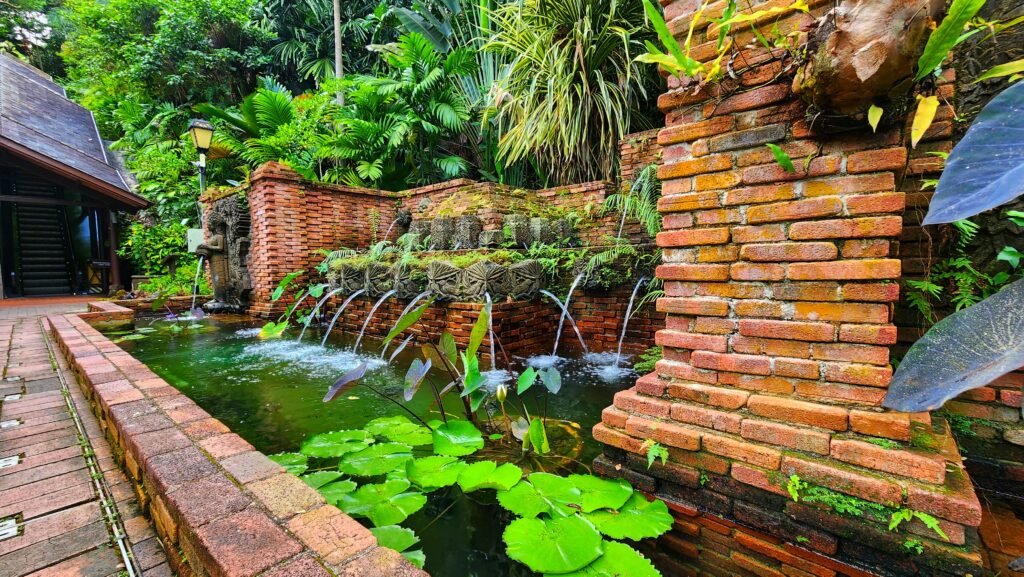
Singapore’s Lighthouses: Beacons of the Past
While Singapore is primarily known for its modern skyline, it also boasts a rich maritime history, evidenced by the several lighthouses that still stand today.
Notable Lighthouses in Singapore:
- Raffles Lighthouse: Located on Pulau Satumu, this lighthouse was built in 1855 and is named after Sir Stamford Raffles. It’s one of the most iconic lighthouses in Singapore and is still operational today.
- Horsburgh Lighthouse: Situated on Pedra Branca, a small island about 54 kilometers from Singapore, this lighthouse is the oldest in the country, dating back to 1851.
- Sultan Shoal Lighthouse: This lighthouse is located on Sultan Shoal, a sandbank in the Singapore Strait. It plays a crucial role in maritime navigation.
- Fort Canning Lighthouse: While no longer operational, the Fort Canning Lighthouse was once a prominent landmark on the hill. It was deactivated in 1958 due to the increasing height of surrounding buildings.
The Role of Lighthouses:
Lighthouses have played a vital role in maritime navigation, guiding ships safely through treacherous waters. While their importance has diminished with the advent of modern technology, these structures remain significant historical landmarks and tourist attractions.
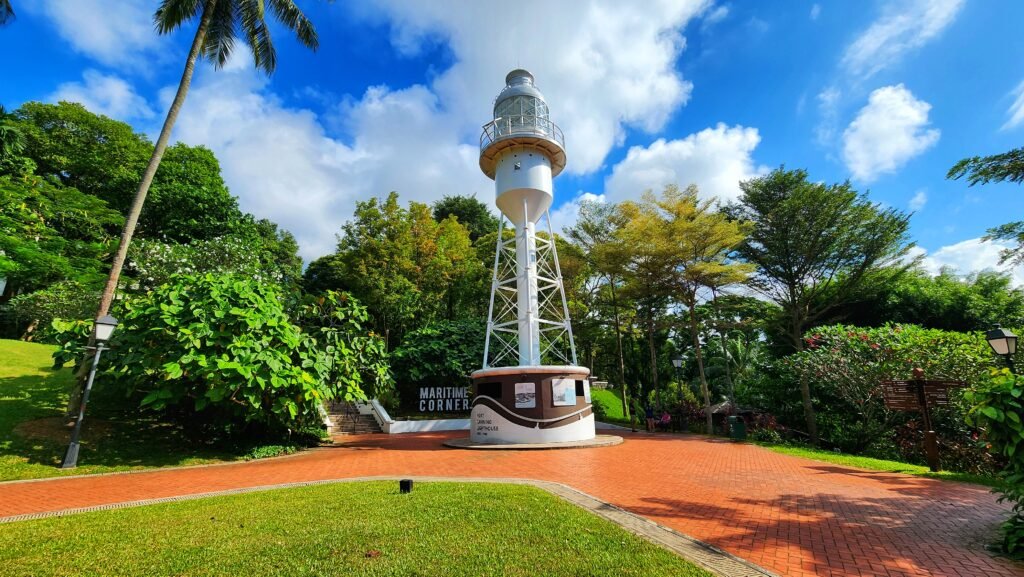
The Fort Canning Flagstaff: A Silent Sentinel of the Past
The Fort Canning Flagstaff stands as a silent witness to Singapore’s maritime history. In an era before advanced communication technology, this towering structure played a crucial role in conveying information to ships entering the Singapore harbor.
Once used to signal the arrival, identity, and status of vessels, the flagstaff remains a poignant reminder of the island’s reliance on maritime trade. Today, while its original function has been replaced by modern technology, the flagstaff continues to be a fascinating historical artifact.
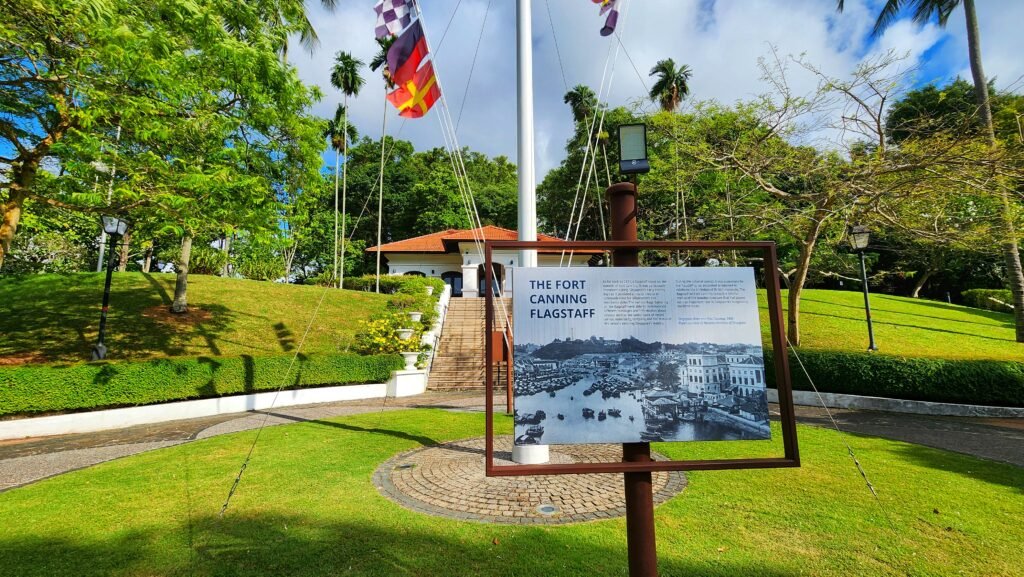
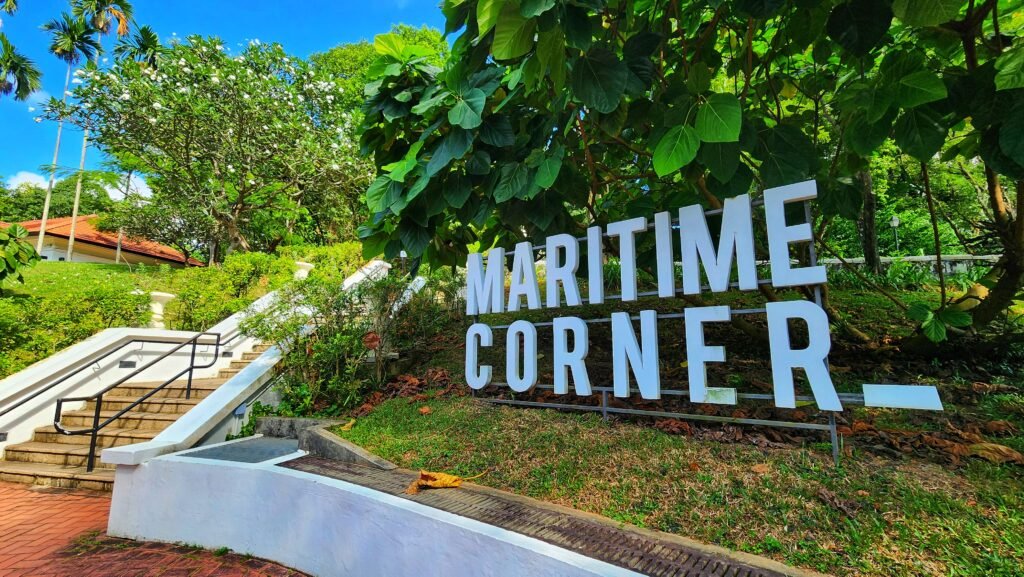
Historical Gardens
Sang Nila Utama Garden:
Replicates a 14th-century Javanese garden, offering a glimpse into the island’s early history. A captivating oasis within Fort Canning Park that transports visitors to the 14th century. Named after the legendary founder of Singapore, this garden is a meticulously recreated Southeast Asian garden, offering a glimpse into the island’s ancient past.
Key Features of the Garden:
-
- Javanese influence: The garden’s design draws inspiration from Javanese architectural and landscaping styles.
- Symmetrical layout: The garden’s layout is characterized by its symmetry, a common feature of traditional Southeast Asian gardens.
- Water features: Reflective pools and water lilies create a serene atmosphere, reflecting the importance of water in ancient cultures.
- Sculptures: Statues of animals like frogs, fish, and ducks add a touch of whimsy to the garden.
A Tranquil Escape:
The Sang Nila Utama Garden offers a peaceful retreat from the bustling city. Its lush greenery, combined with the carefully curated design, creates a serene ambiance perfect for relaxation and contemplation.
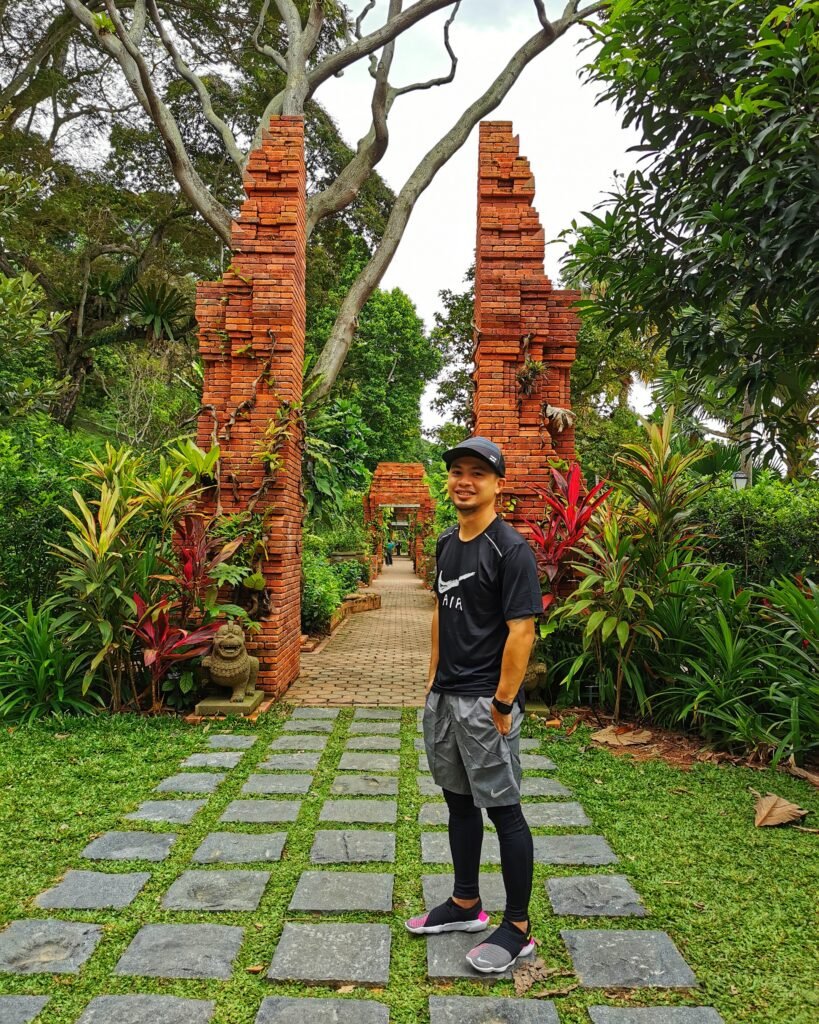
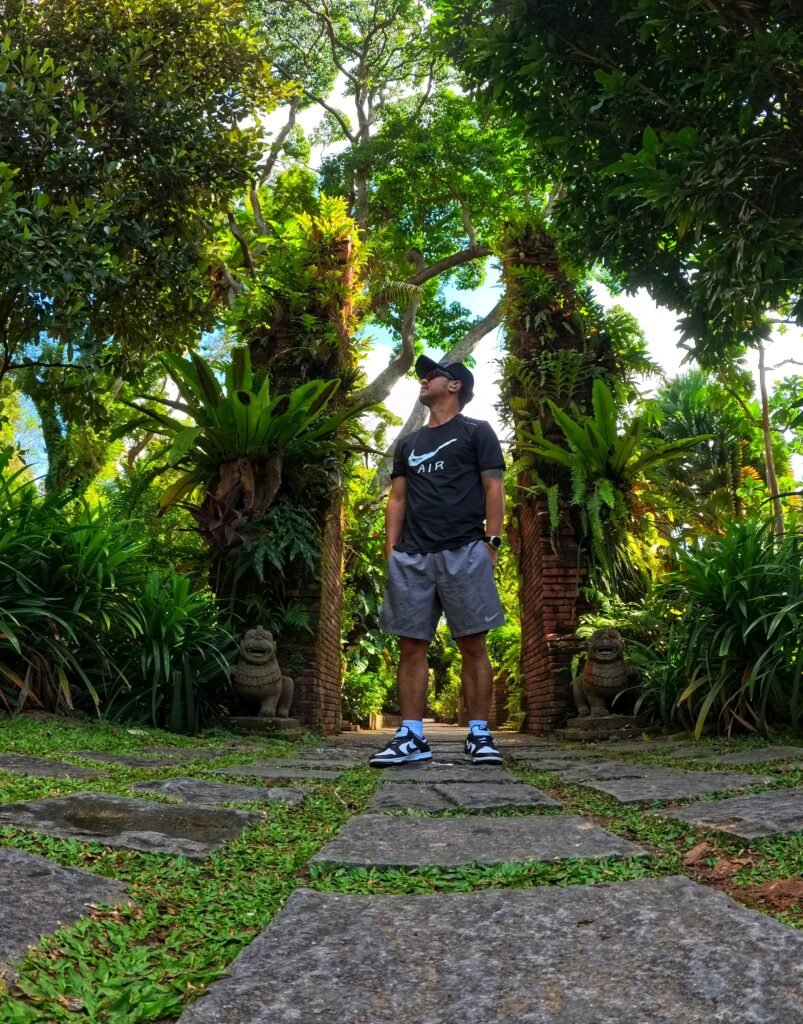
Spice Garden:
Explore the history of spice trading in Singapore with a variety of aromatic plants. A living testament to Singapore’s role as a spice trading hub. This aromatic oasis showcases a diverse collection of herbs, spices, and plants, offering visitors a sensory experience and a glimpse into the island’s historical trade.
A Sensory Delight:
-
- Aromatic journey: The garden is a fragrant haven, with the scents of various spices filling the air.
- Diverse flora: Visitors can explore a wide range of plants, including nutmeg, clove, pepper, and cinnamon.
- Educational experience: Informative signage provides insights into the history and uses of different spices.
Singapore’s Spice Trade Heritage:
The Spice Garden plays a crucial role in telling the story of Singapore’s spice trade. It highlights the island’s importance as a regional trading center and the economic significance of spices in the past.
Nine Gardens:
A collection of themed gardens that showcase Singapore’s rich botanical heritage. A testament to the hill’s rich and multifaceted history. Each garden tells a unique story, from the ancient Malay kingdom to the British colonial era. These carefully curated spaces offer visitors a chance to immerse themselves in Singapore’s past.
Other Notable Landmarks
Spiral Staircase
A popular photo spot offering stunning views of the park.One of Fort Canning Park’s most Instagrammable spots is undoubtedly the spiral staircase. Nestled within the lush greenery, this architectural marvel is a photographer’s dream. The staircase winds its way upwards, surrounded by towering trees that create a magical, ethereal atmosphere.Whether you’re capturing a stylish outfit or simply enjoying the beauty of the surroundings, the spiral staircase offers a unique perspective of the park. It’s a must-visit for anyone looking to create unforgettable memories.Tip: Be prepared for crowds, especially on weekends! Early mornings or late afternoons might offer a quieter experience.
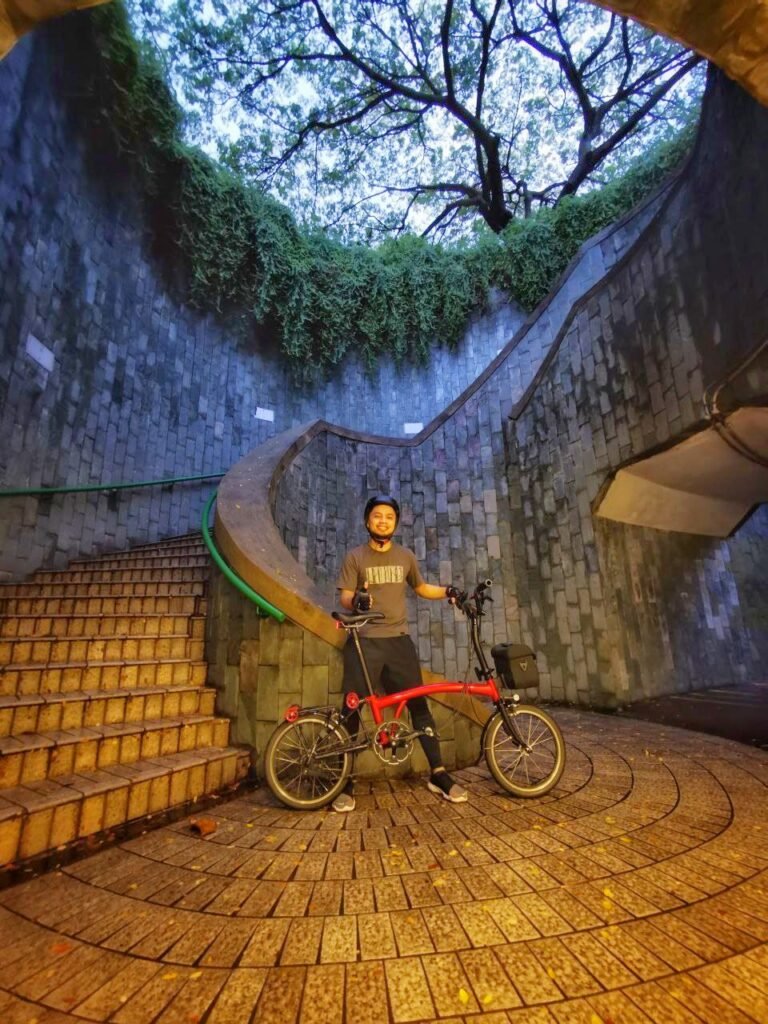
Jubilee Park
A children’s playground amidst the historical surroundings. A delightful children’s playground nestled within the historical grounds of Fort Canning Park. This vibrant space offers a perfect balance of fun and education, making it a popular spot for families.
Key Features of Jubilee Park:
-
- Playful design: The playground features a variety of equipment to cater to different age groups.
- Nature-inspired elements: Incorporating natural materials and greenery, the park promotes outdoor play and exploration.
- Safe environment: The park prioritizes safety, with cushioned flooring and age-appropriate play areas.
- Historical context: Located within Fort Canning Park, children can learn about Singapore’s history while having fun.
A Family-Friendly Oasis:
Jubilee Park is more than just a playground. It’s a place where families can bond, relax, and enjoy the outdoors. The park’s proximity to other historical attractions in Fort Canning makes it an ideal spot for a family day out.
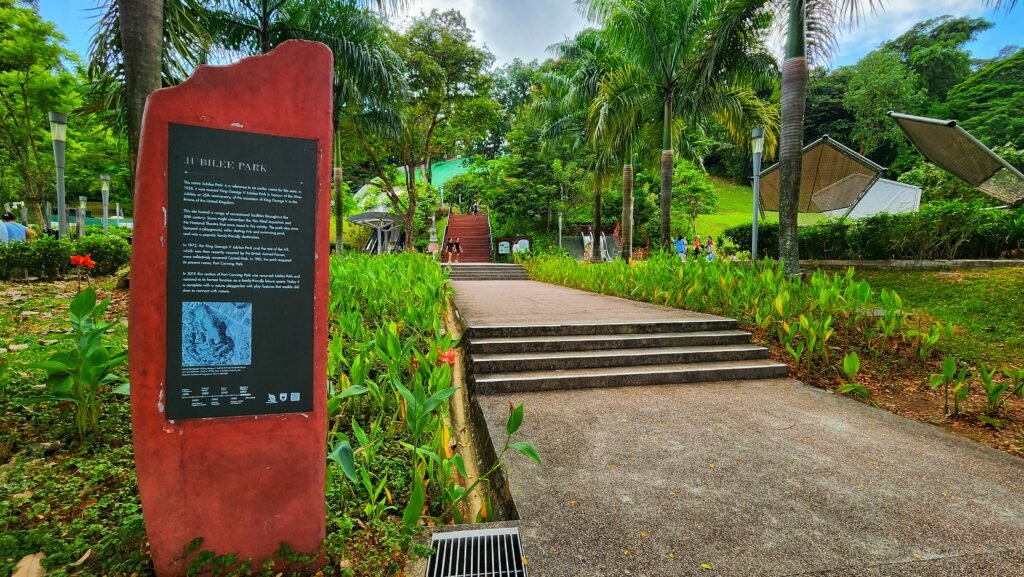
Food Options Near Fort Canning Park
While Fort Canning Park itself doesn’t have many food stalls or cafes within its grounds, there are plenty of delicious options just a short walk away. Here are a few popular choices:
Nearby Cafes and Restaurants:
- Le Jardin: This charming cafe offers a delightful setting amidst the greenery of Fort Canning Park. Enjoy a leisurely brunch or afternoon tea while soaking in the ambiance.
- Cafe Lodge (YWCA Fort Canning): Located within the YWCA, this cafe serves up affordable and tasty meals, perfect for a quick bite.
- Tiong Bharu Bakery: This iconic bakery is just a short walk away and offers a wide range of delicious pastries, breads, and cakes.
- Restaurants in Clarke Quay and River Valley: For a wider variety of cuisines, head to nearby Clarke Quay or River Valley, where you’ll find everything from casual dining to fine dining options.
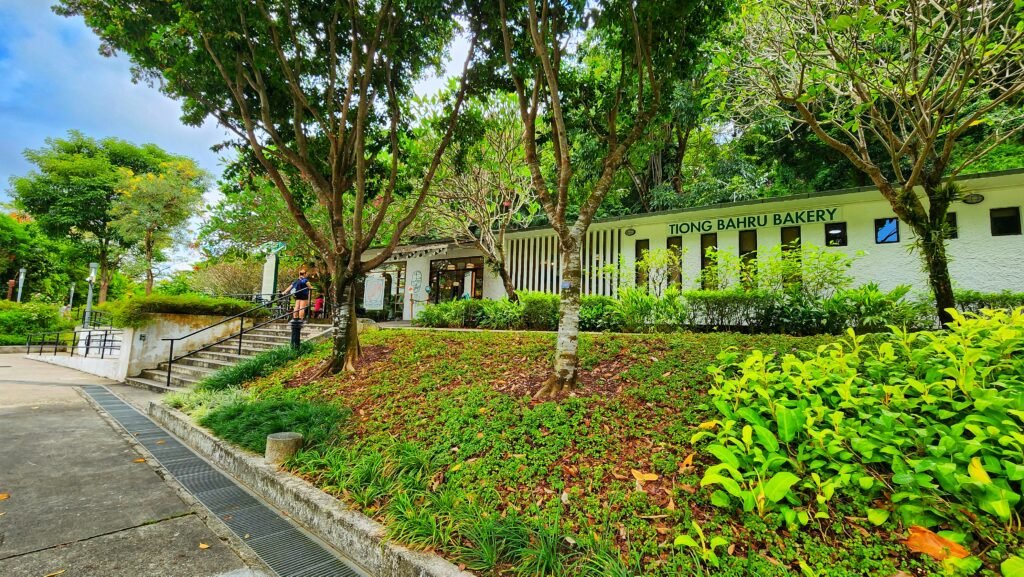
Note: The food scene in Singapore is constantly evolving, so it’s always a good idea to check for the latest offerings and reviews before your visit.
Get ready to be captivated by the magic of Fort Canning Park! Don’t forget to like, share, and subscribe to my channel Edward Adventure Blogs for more exciting adventures. Stay tuned for upcoming videos as I explore more hidden gems around the world.
